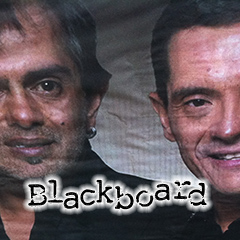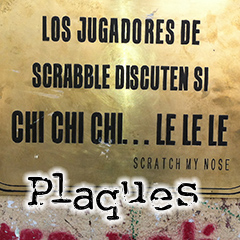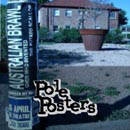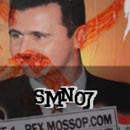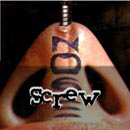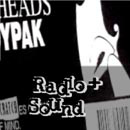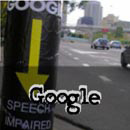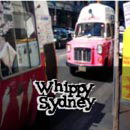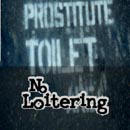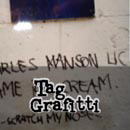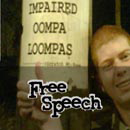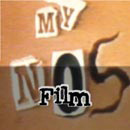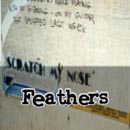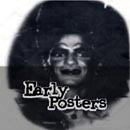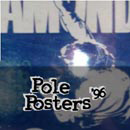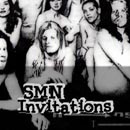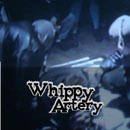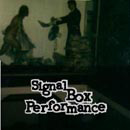SMN Blackboard (English)

Small events in the grey city along the Andes.
"It is the unpredictable which creates the event": George Braque
Usually, when I imagine a far and distant place without thinking of Chile, Australia comes to mind as the key to unlock an unknown and magical place where the landscape seems to dominate everything, even the monumental architecture of the Sydney Opera House, a building that has become not only one of the seven modern wonders of the world, but also the reflection of how we fantasise about that nation.
In turn, when I think about the visual arts of today, I seldom consider cities that do not express the vertigo and mobility of Berlin, Hong Kong, London or New York. As if places such as Buenos Aires, Lima or Sao Paulo lacked such attributes. But the peculiarity of the matter is that there is no place in our vocabulary for cities where there is also contemporary art, such as Bali, Cape Town, Melbourne and Sydney. In all these places there is a system that includes the works of art and its creators.
A couple of weeks ago I received a friendly call that invited me to observe and narrate the urban interventions of the art collective "Scratch My Nose", which in the past quarter century has been developing provocative works in cities as diverse and distant as Beirut, New Jersey and Sydney. They always appeal to an intelligent game in which text and image seek to challenge our normal perceptions. This fact has led them to work in areas related to film, music, performance, graffiti and sound art (1). They always appeal to a desire to multiply this original urge of giving an intelligent opinion about how "Scratch My Nose" sees the world and, in particular, how they see us Chileans.
I identify this as a characteristic of Australian art in recent years, where the artists insert themselves into the city to record in it its changes and transformations, as several of them use the city as a field for fertile operations that provide data about the landscape and its inhabitants. I think, for example, about the work of Shaun Gladwell and his videos about urban tribes or his travel notes written in the vast desert of Australia. Or about the realistic paintings of Jan Nelson, portraying Melbournian teenagers, or the photographic performances of Liza May Post, embedded in a world that is as interconnected as it is lonely and full of isolated beings.
In that order of thought, "Scratch My Nose" believes that in the breadth of contemporary art, the boundaries of visual arts deserve to be deleted and integrated into other areas of human knowledge, including humour as a device of mental action which is in the face of spectators who are increasingly skeptical of what they observe.
The ‘Scratch My Nose’ collective arrived in 2010 which was the starting point for this series of small gestures in the grey city at the edge of the Andes. Although there were some obvious facts waiting to be taken advantage of, such as the consequences of the earthquake that struck Chile early in the year, the change of government and then the Bicentennial of the Republic of Chile, the group were not really bothered with these events. They cared about how we behaved and, in the best case, how we faced such events. That was how "Scratch My Nose" quickly took notice of the local language, with its broken words, idioms and gestures, which drifted into a systematic study of that lexicon full of sayings and transformations of language.
Trying to understand the local language and then venturing into its idioms and gestures was not an easy task, and yet this group took it as a challenge beyond the purely artistic, as the time spent in these parts made it important for them to not only understand our twisted speech, but to also communicate within it. This is not so easy when it comes to sharing with the local community in subjects such as football, where apparently the word was replaced by loud gesturing and ranting as the ball moved from one set of legs to the other.
From that point of study, the urban interventions that "Scratch My Nose" has been performing throughout this month (April 2013) were the result of spending almost one thousand days in the country. They rather reproduce the decanting of the experience of living in Chile, considering the contradictions, twists and revelations that the local speech and culture have created within them. Therefore, when the collective decided to use the urban poster throughout the city to expose these reflections, they had considered that such ephemeral gesture would be seen and read in a fraction of a second by the hundreds of thousands of pedestrians walking about in Santiago.
Last week, and by pure chance, I encountered one of the posters in the area of Parque Bustamante, and I could not stop thinking about what the collective Acciones de Arte (CADA) (2) had done in Chile in the eighties, in this same city, as a sign of protest against the violence of the military dictatorship. Thirty years later, "Scratch My Nose" reaffirms with this approach that the city remains a fertile territory in which to offer a vision of what the local identity is like, through the manipulation of words.
In general, the posters look like ads in which words expose a fragment of a story. Visually, they are like the boards you can expect to find in bars and restaurants in the capital, but instead of the daily menu you will see a series of phrases and everyday texts, joined by the linear and graphic frame that contains them. The collective deliberately plays with different typefaces and spellings in order to enrich the content of their gestures.
The outline of the poster serves as a framework for the logo of the collective, as in an endless game of associating everything with everything else. Other posters mimic urban signage such as commemorative plaques, but they still maintain the playful character of the speech. Since they are stuck in the street, especially on the residual spaces of walls, these posters are at the mercy of being quickly removed from their place. They could also can be hidden by other ads from the most diverse origins and meanings. This gives the intervention not only the character of a brief life in the city, but is also a metaphoric reflection of the brevity of our conversations with each other.
If we analyse the texts of some of these posters, we will discover that in the apparent absurdity of these narrations we can find a richness in the friction of words. This leads us to the Dadaist poetry of Tristan Tzara (1896 - 1963) and his famous reflection on the movement when he says "The magic of a word —Dada— which has brought journalists to the gates of a world unforeseen, is of no importance to us". (3)
This idea, in the context of the actions undertaken by the collective in our city, makes sense by granting the set of phrases a trace of an "encounter by chance" in the media that they chose: the poster. Until recently, this media was endowed with unparalleled efficiency to promote, denounce, inform and educate a society craving information, disoriented in the metropolis, helpless to the dangers of modern life. However, in a globalised world that is saturated with electronic information, these posters are a beautiful reminder that some of our analog past still survives.
These fragments reflect the limits of the national soul and how "Scratch My Nose" sees us: from Felipe Camiroaga Facial Hair (1966 - 2011) to the Jumbo Supermarket, through to Australian MOR band Air Supply and our nationalistic war cry "La Roja de Todos”, encouraging our national football team. This can be better understood in the following text of one of their posters, here translated into English: "Pope John Paul Ringo George + Michael football academy has been heavily criticised due to the lack of Air Supply hymns played over the loudspeaker before + after the matches." Others say the following: “I posed nude in the Jumbo Supermarket catalogue where I was photographed in all nudist Scrabble competition arguing if Ch-Ch-i-i-le-le was a double scoring word”.
But what are these phrases telling us, as enigmatic poems arranged like fragments of narratives about the local lifestyle? They are simply an expression of everything and nothing, in which the local society is immersed. This set of seemingly incoherent phrases are the "humus" from which we are made as creatures capable of speech. There are poetry and humour, freedom and reservations. This leads us to note that in each of the posters that the collective has spread around the city there is a whiff of how we are as Chileans. At times euphoric, but also consumerists; attached to a desire to see us globalised through the use of words in English, which reflect our hobbies or musical tastes, and some sentences can even reflect our fanaticism for football on par with the desire to feel recognised.
Therefore, the city is the perfect stage for this local identity that the collective has identified; otherwise, it would only become a decalogue of phrases and determinations, not unlike the Tables of the Law for a nation whose identity is still very young and, therefore, in constant change. Just like the everyday life of this series of posters scattered in various parts of the city: unpredictable and eventful.
Carlos Navarrete - Santiago de Chile, April of 2013
Notes:
- For a better understanding, visit www.scratchmynose.net
- The CADA was formed by the writer Diamela Eltit, the sociologist Fernando Balcells, the visual artist Juan Castillo, the video artist Lotty Rosenfeld and the poet Raul Zurita.For more information, see "Margins and Institutions, Art in Chile since 1973" by Nelly Richard. Art & Text. Melbourne, Australia. 1986
- Tristan Tzara, "Dada Manifesto 1918" in Tristan Tzara, Seven Dada Manifestos. Tusquets editores. Barcelona, Spain. 1994. p.11

